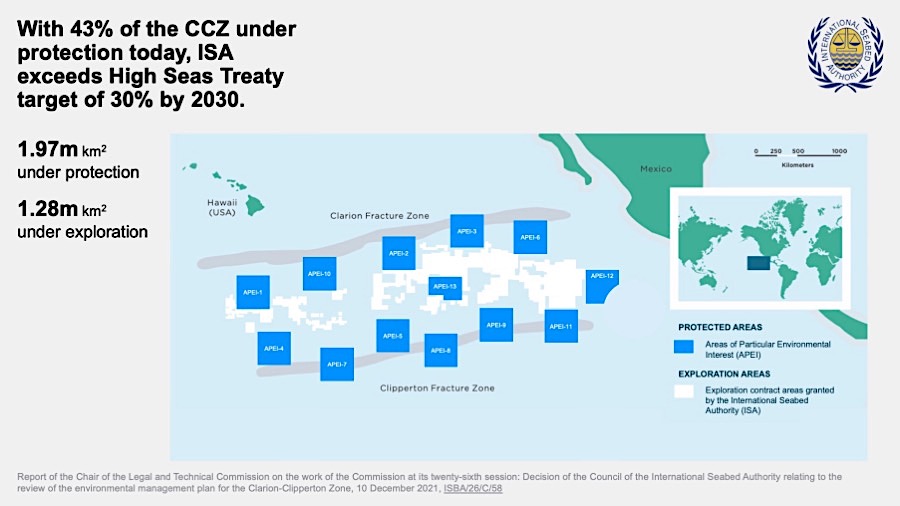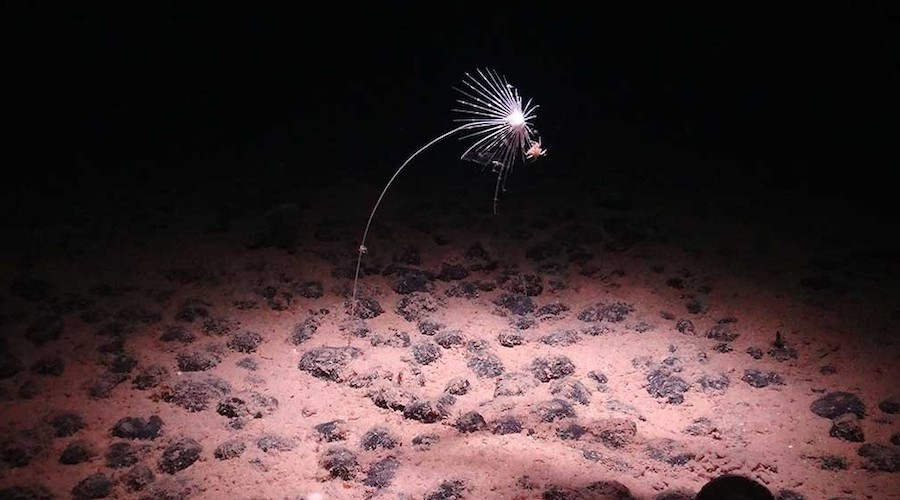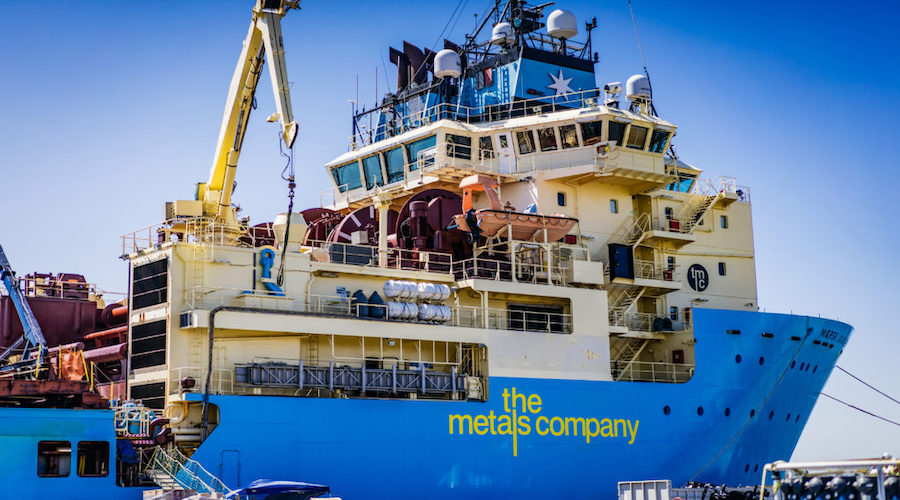OUTLAW DEEP-SEA MINIJG
Deep-sea mining scars remain after 40 years, but life returning
A new study led by the UK’s National Oceanography Centre (NOC) has revealed that the effects of a deep-sea mining experiment in the Pacific Ocean more than four decades ago are still apparent, though early signs of biological recovery have emerged.
A 2023 expedition to the mineral-rich Clarion Clipperton Zone (CCZ) by a team of scientists led by Britain’s National Oceanography Centre found that the seafloor, a complex ecosystem hosting hundreds of species, still bears scars of a 1979 test mining operation.
The collection of small polymetallic nodules, potato-shaped rocks rich in minerals and metals, from an eight-metre strip of the seabed caused long-term sediment changes and reduced the populations of many of the larger organisms living there, the study, published in Nature, shows.
The team of researchers also found encouraging signs of recovery, with smaller and more mobile creatures returning to the area.
Lead author and expedition leader, Professor Daniel Jones of the National Oceanography Centre said that to tackle the question of recovery from deep-sea mining, it is necessary to first look at available evidence and use old mining tests to help understand long-term impacts.
“Forty-four years later, the mining tracks themselves look very similar to when they were first made, with a strip of seabed cleared of nodules and two large furrows in the seafloor where the machine passed,” Jones said.
Among the first creatures to recolonize the disturbed areas were large, amoeba-like xenophyophores, commonly found throughout the CCZ — a vast area between Hawaii and Mexico. “However, large-sized animals that are fixed to the seafloor are still very rare in the tracks, showing little signs of recovery,” he said.

The study’s release coincides with a key meeting of the UN’s International Seabed Authority (ISA) in Kingston, Jamaica, where delegates from 36 countries are reviewing over hundreds of proposed amendments to a 256-page draft mining code that will rule commercial deep-sea mining.
Environmental groups have called for a halt to such activities, a position supported by 32 governments and 63 major companies and financial institutions.
While few expect a final text to be completed by the time the latest round of talks ends on March 28, Canada’s The Metals Company (NASDAQ: TMC) plans to submit the first formal mining application in June.
TMC, which will hold fourth quarter and full year 2024 financial results calls after market close on Thursday, has long said that deep-sea mining has a smaller environmental footprint than terrestrial mining.
Recovery not only possible, but likely
Chief executive officer Gerard Barron told MINING.COM that the new study supports this view. “For years, activists have pushed baseless claims that nodule-collecting robots will dig up the seafloor and devastate ecosystems. This new study proves otherwise — showing that even with outdated, far more disruptive technology, recovery is not only possible but likely within decades,” Barron said.
“Sessile megafauna such as sponges were scarce in track areas where nodules were removed, as expected, but were observed attached to nodules left behind by the 1979 collector. This suggests a potential mitigation strategy — leaving some nodules intact to support recolonization by reliant organisms,” he said.

TMC has pledged to leave at least 30% of its contract areas untouched to facilitate recovery. “Our own nodule collector will disturb just the top 3 cm of sediment, not the 80 cm as seen in the 1970s trials,” Barron noted.
Opponents warn that the long-term consequences of deep-sea mining remain uncertain, advocating for further research before large-scale extraction begins. Supporters argue that the industry is vital for meeting growing mineral demand.
According to the International Energy Agency, demand for copper and rare earth metals is expected to rise by 40%, while the need for nickel, cobalt, and lithium from clean energy technologies alone could increase by 60%, 70%, and 90%, respectively.
The Metals Company to apply for deep sea exploration license under US legislation
Canadian miner The Metals Company said on Thursday it had formally initiated a process under the US Department of Commerce to apply for exploration licenses and permits to extract minerals from the ocean floor.
The company plans to apply under the Deep Seabed Hard Mineral Resources Act of 1980 (DSHMRA) instead of the International Seabed Authority (ISA), stating the latter had not yet adopted regulations around deep seabed exploitation.
It also added that it has requested a pre-application consultation with National Oceanic and Atmospheric Administration (NOAA).
TMC’s bid to become the first company to gain approval to develop deep sea minerals has been controversial. Environmental groups are calling for all activities to be banned, warning that industrial operations on the ocean floor could cause irreversible biodiversity loss.
This move comes at a time when delegations from 36 countries are attending a council meeting of the UN’s ISA in Kingston, Jamaica this week to decide if mining companies should be allowed to extract metals such as copper or cobalt from the ocean floor.
Few expect a final text for the mining code to be completed by the end of the latest round of talks on March 28, with delegates also planning to discuss potential actions if a mining application is submitted before the regulations are completed.
“We believe we have sufficient knowledge to get started and prove we can manage environmental risks. What we need is a regulator with a robust regulatory regime, and who is willing to give our application a fair hearing,” said Gerard Barron, CEO of The Metals Company.
Advocacy group Greenpeace said the move was “desperate”, accusing the company of “encouraging a breach of customary international law”, by attempting to mine the international seabed under US legislation.
(By Seher Dareen and Ernest Scheyder; Editing by Vijay Kishore)


No comments:
Post a Comment